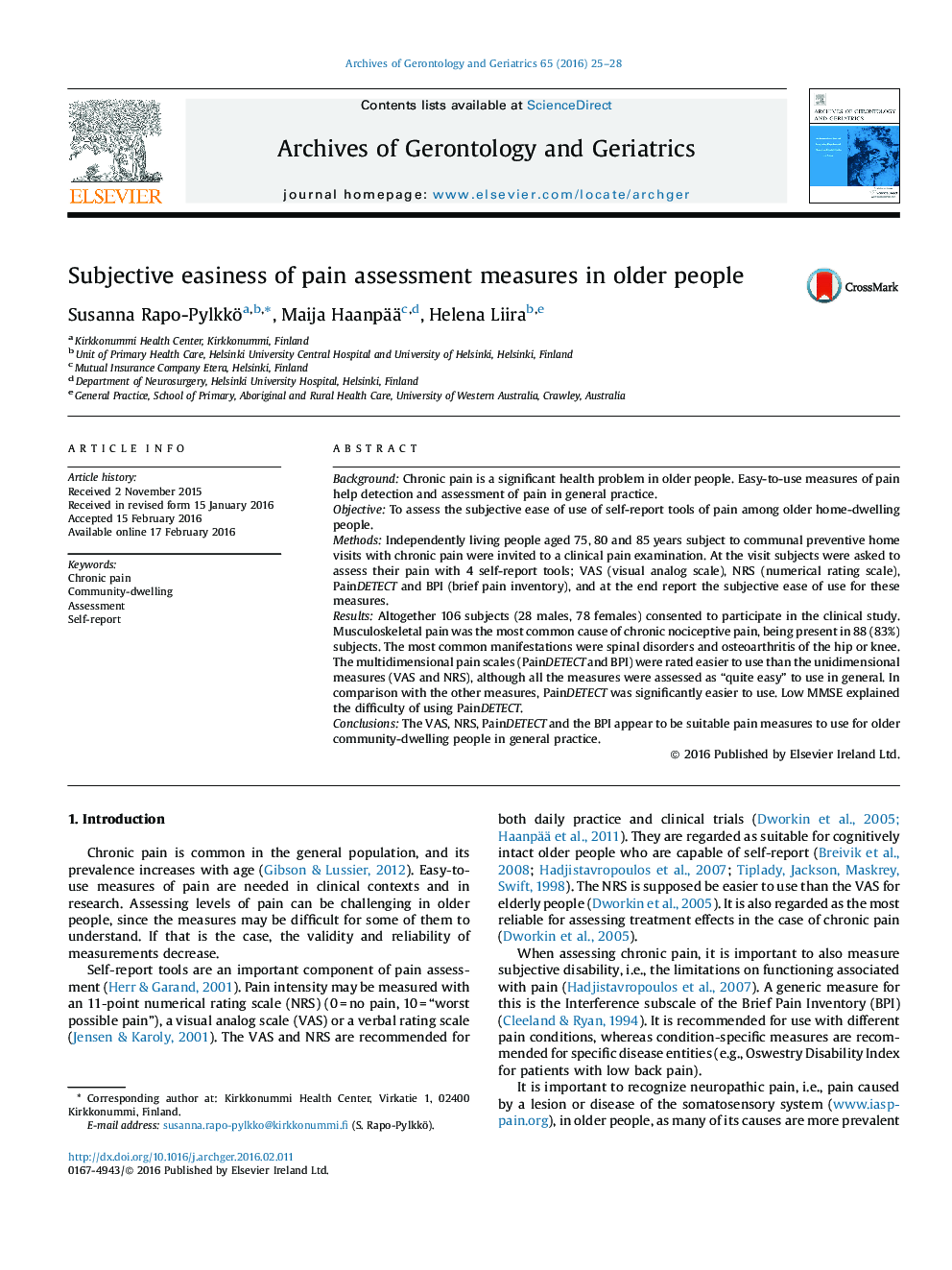| Article ID | Journal | Published Year | Pages | File Type |
|---|---|---|---|---|
| 1902696 | Archives of Gerontology and Geriatrics | 2016 | 4 Pages |
•Chronic pain is significant health problem causing disability among older people.•Self-report measures of pain are important tools to assess pain in clinical settings.•They appear to be suitable and informative to use for community-dwelling older patients in general practice.
BackgroundChronic pain is a significant health problem in older people. Easy-to-use measures of pain help detection and assessment of pain in general practice.ObjectiveTo assess the subjective ease of use of self-report tools of pain among older home-dwelling people.MethodsIndependently living people aged 75, 80 and 85 years subject to communal preventive home visits with chronic pain were invited to a clinical pain examination. At the visit subjects were asked to assess their pain with 4 self-report tools; VAS (visual analog scale), NRS (numerical rating scale), PainDETECT and BPI (brief pain inventory), and at the end report the subjective ease of use for these measures.ResultsAltogether 106 subjects (28 males, 78 females) consented to participate in the clinical study. Musculoskeletal pain was the most common cause of chronic nociceptive pain, being present in 88 (83%) subjects. The most common manifestations were spinal disorders and osteoarthritis of the hip or knee. The multidimensional pain scales (PainDETECT and BPI) were rated easier to use than the unidimensional measures (VAS and NRS), although all the measures were assessed as “quite easy” to use in general. In comparison with the other measures, PainDETECT was significantly easier to use. Low MMSE explained the difficulty of using PainDETECT.ConclusionsThe VAS, NRS, PainDETECT and the BPI appear to be suitable pain measures to use for older community-dwelling people in general practice.
